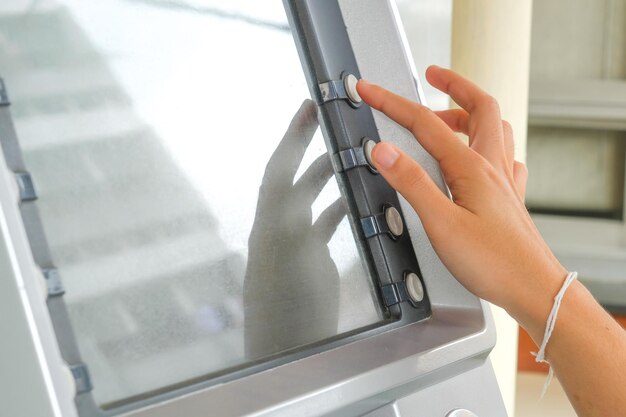Effortlessly Replacing the Water Filter in Your Whirlpool Refrigerator: A Comprehensive Guide
Has the water from your Whirlpool refrigerator started tasting a bit off lately? Or perhaps the indicator light has turned on, reminding you it's time for a filter replacement. Changing the filter in your Whirlpool refrigerator is a routine task that ensures your water stays fresh and clean. In this guide, you'll learn how to change the filter quickly and efficiently, while also exploring related topics to keep your appliance running smoothly.
Understanding the Importance of Your Whirlpool Water Filter
Why Change Your Whirlpool Refrigerator Water Filter?
Water filters play a crucial role in maintaining the quality of water and ice dispensed from your refrigerator. Over time, these filters can become clogged with contaminants like chlorine, dirt, rust, and microorganisms. Regularly changing the filter:
- Improves Taste: Ensures your water and ice remain fresh and free from unwanted flavors.
- Maintains Flow Rate: Prevents clogs that can restrict the water flow.
- Ensures Safety: Reduces the presence of harmful contaminants, supporting your family's health.
Changing the filter every 6 months is generally recommended, but refer to your model's manual for the exact guidance.
Identifying Your Whirlpool Refrigerator Filter Type
Before diving into the replacement process, it's important to know which filter your Whirlpool refrigerator uses. Whirlpool fridges come with several types of filters, usually categorized by their location—inside the fridge compartment or at the base grille. Common filter models include Filters 1, 2, 3, 4, and 5, each fitting different refrigerator models.
Finding the Correct Filter for Your Model
- Check the Manual: Your refrigerator's user manual will list the compatible filter model.
- Inspect the Existing Filter: If you've previously changed the filter, cross-check the model number on your existing one.
- Use the Whirlpool Website: They offer a filter lookup tool to find the right fit for your fridge.
Step-by-Step Guide to Changing the Filter
Now that you know the importance and type of your filter, let's get to the hands-on part!
Preparing for Replacement
- Gather Necessary Tools: Usually, no tools are needed. Ensure you have a bucket or towel nearby to catch any minor leaks.
- Turn Off the Ice Maker: If your fridge has an ice maker, make sure to turn it off to prevent it from cycling during the replacement.
- Locate the Filter: Refer to the manual for the exact position, either inside the fridge or at the base.
Replacing the Filter
For Filters Located in the Fridge Compartment
- Open the Cover: Press or pull gently to open the compartment.
- Remove the Old Filter: Twist the filter counterclockwise to release it.
- Install the New Filter: Insert and twist the new filter clockwise until it locks in place.
- Close the Cover: Ensure it clicks back into position.
For Base Grille Filters
- Remove the Grille: Pull out gently to access the filter.
- Twist to Remove: Rotate the old filter counterclockwise.
- Insert the New Filter: Align and turn it clockwise until secured.
- Replace the Grille: Push back until it snaps in place.
Resetting the Indicator Light
After installation, remember to reset the filter indicator light. This usually involves pressing and holding the filter button for a few seconds. Check your manual for the specific steps for your model.
Best Practices for Maintaining Your Refrigerator
Regular Maintenance Tips
- Monthly Cleaning: Clean the interior with mild soap and water to prevent bacteria growth.
- Check for Leaks: Inspect water lines and connections periodically.
- Keep Vents Clear: Ensure air flows freely around your fridge to avoid overheating.
Long-term Care for Your Appliance
Scheduled routine maintenance can prolong your fridge's lifespan, keep energy costs down, and ensure optimal functionality. Simple tasks like cleaning condenser coils annually and checking door seals can go a long way.
Troubleshooting Common Problems
What if the new filter doesn't fit, or the water flow seems inadequate even after replacement? Here are some quick troubleshooting tips:
- Fitment Issues: Double-check the filter model. It should match your refrigerator's specification.
- Poor Water Flow: Ensure the filter is installed correctly. If the problem persists, the water line may be blocked.
- Indicator Light Won't Reset: Make sure you hold the reset button long enough. Consult the manual if issues continue.
Summarizing Key Steps and Takeaways
Let's briefly recap the essential steps and best practices so you're always prepared to keep your Whirlpool refrigerator in top shape:
- 🔄 Regular Replacement: Change the filter every 6 months to ensure optimal performance.
- ⚒️ Proper Handling: Always turn off the ice maker and have a towel ready to manage leaks.
- 📘 Consult Your Manual: It's your go-to resource for addressing filter-related queries.
- 🔍 Check Compatibility: Ensure you have the correct replacement model to avoid fitment issues.
Closing Thoughts
Changing the filter in your Whirlpool refrigerator is a straightforward task that enhances your appliance's performance and ensures you and your family enjoy clean, refreshing water every day. By familiarizing yourself with your fridge's maintenance needs, you're also taking a crucial step towards extending its lifespan and efficiency. For continued satisfaction, incorporate regular checks and filter replacements into your household routine. Remember, a little proactive care can deliver big benefits over time.
